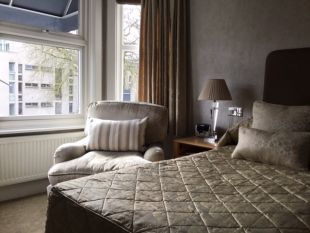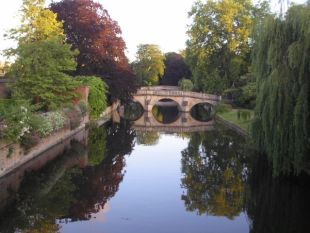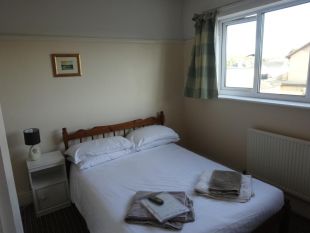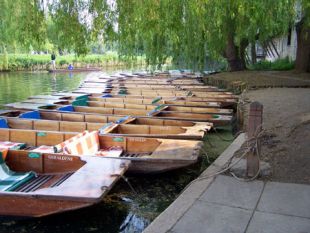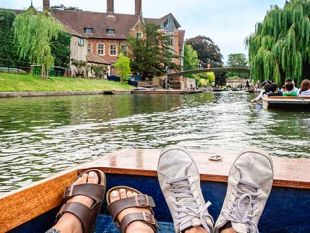Cambridge
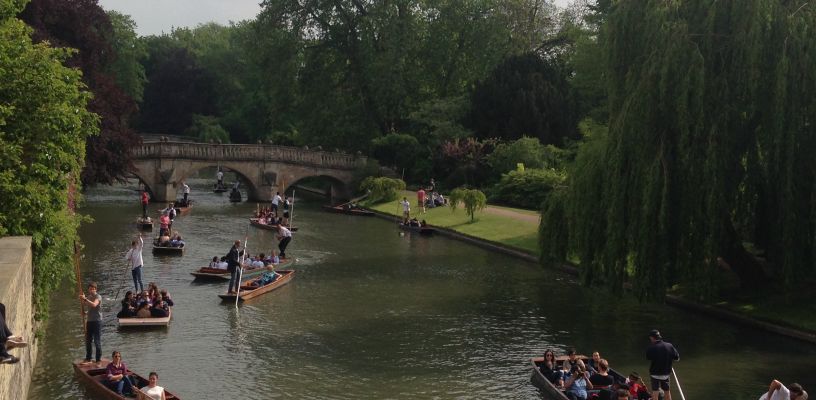
Let us help you plan your ideal vacation in Cambridgeshire...
One of England's most significant agricultural areas, Cambridgeshire has miles of farmland and rural charm and, thanks to its predominantly flat landscape, offers the visitor vast, unbroken horizons. Criss-crossed by waterways, this gentle, eastern county suggests a slowed-down lifestyle with sublime villages, important country houses and unforgettable sunsets waiting to be discovered.
The story of Cambridgeshire, like much of East Anglia, goes back to the days when the area was largely an impenetrable region of marsh and swamp. The Romans were the first to try to tame these inhospitable fens, building causeways above the waterlogged ground and installing drainage channels to divert the water, motivated by the need to transport food to troops in military garrisons further north.
In modern times the freshly uncovered, rich peaty soil helped to turn Cambridgeshire into one of Britain's leading food-producing regions. It also provides rare habitats for a host of wildlife and is blessed with large and important waterways – including the Great Ouse and the fish-filled rivers of the Welland and Nene.
The county is most famous for the city of Cambridge, renowned as one of England's two great university towns, steeped in history and tradition. It has been described as one of the most beautiful cities in Britain. The city takes its name from the crossing of the River Cam.
Cambridgeshire Animation
The first college, Peterhouse, was founded by Hugh de Balsham, Bishop of Ely, in 1284. Clare, Pembroke, Gonville, Trinity Hall and Corpus Christi were established in the first half of the fourteenth century. Ten more colleges were founded during the fifteenth and sixteenth centuries, including Christ's, King's, Queens', Jesus, St. John's, Trinity, and Emmanuel. As well as the colleges, the university established fine buildings including the 14th century Old Schools, the 18th century Senate House and more modern buildings like the University Library and the Fitzwilliam Museum.
The colleges contain the great architectural treasures of Cambridge. Founded by kings, queens bishops, nobles, guilds and rich widows, they attracted powerful patrons and large endowments of land and money. Such wealth allowed the colleges to use the best architects, including Sir Christopher Wren, Powell and Moya - to create beautiful buildings that reflect perfectly 700 years of British architectural heritage. It is a heritage symbolised by the soaring windows and fan vaults of King's College Chapel.
Today Cambridge is a thriving city of some 100,000 people. Its commercial heart is surrounded by fine buildings and green open spaces. The Backs, the famous grass-covered banks of the River Cam, are carpeted with crocus and daffodils in Spring.
This is the Cambridge of Brooke, Byron, Newton and Rutherford, of the summer idyll of punts, bumps', cool willows, and May Balls. In Summer you can take a punt along the river and enjoy the architectural glories of the riverside colleges.
The city of Ely ('eel island') to the north east is dwarfed by a giant cathedral and nearby is one of the few remaining parcels of un-drained land, Wicken Fen – one of the oldest nature reserves in Britain.
Meanwhile, the bustling city of Peterborough has an historical vitality of its own, with Bronze Age excavations at Flag Fen and a modern ancestry that dates back to AD 650. Its first major building was a monastery that was destroyed by Vikings in 869. Within 300 years a cathedral had been built by the Normans. It contains the tomb of Catherine of Aragon.
A key town is Huntingdon, lying on the Great Ouse and market towns like St Ives, which grew up around a priory in the 10th century, typify the way in which many places in Cambridgeshire came into being. It still has a 15th century bridge containing a chapel and a statue of the great Oliver Cromwell who owned a farm nearby.
Another market town, St Neots is close to both Buckden Palace and Kimbolton Castle which were the homes of Catherine of Aragon.
Outside the village of Grafham is the third largest man-made reservoir in Britain, Grafham Water, which was created in the 1960s. An important sanctuary for water birds, it is also the county's focal point for numerous water-based sports, including sailing, wind-surfing and angling. One of the county's must-see attractions is the Imperial War Museum at Duxford which holds a collection of planes from both world wars. It was born from a former Battle of Britain RAF station and one of its most memorable fliers was Douglas Bader.
Read More

